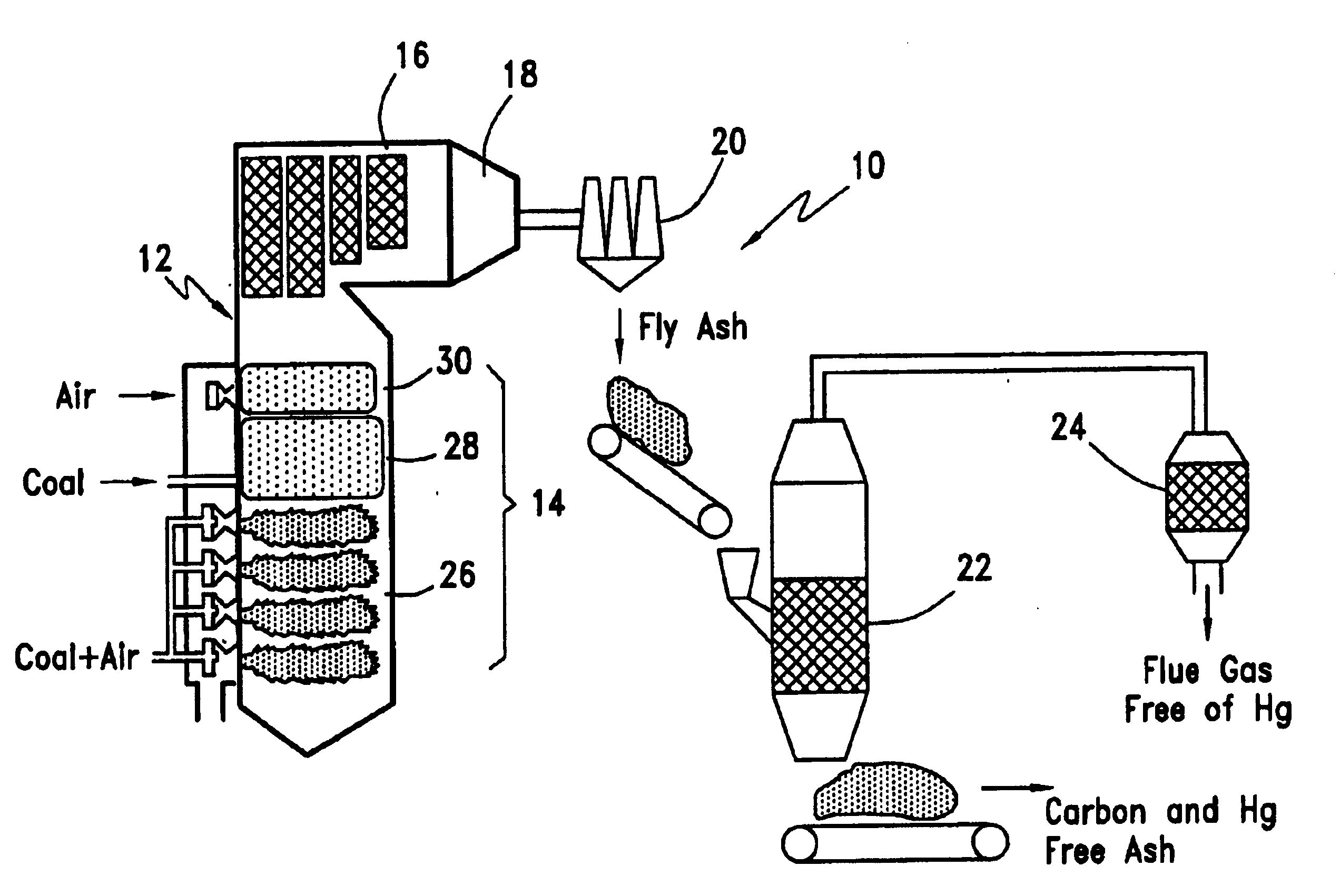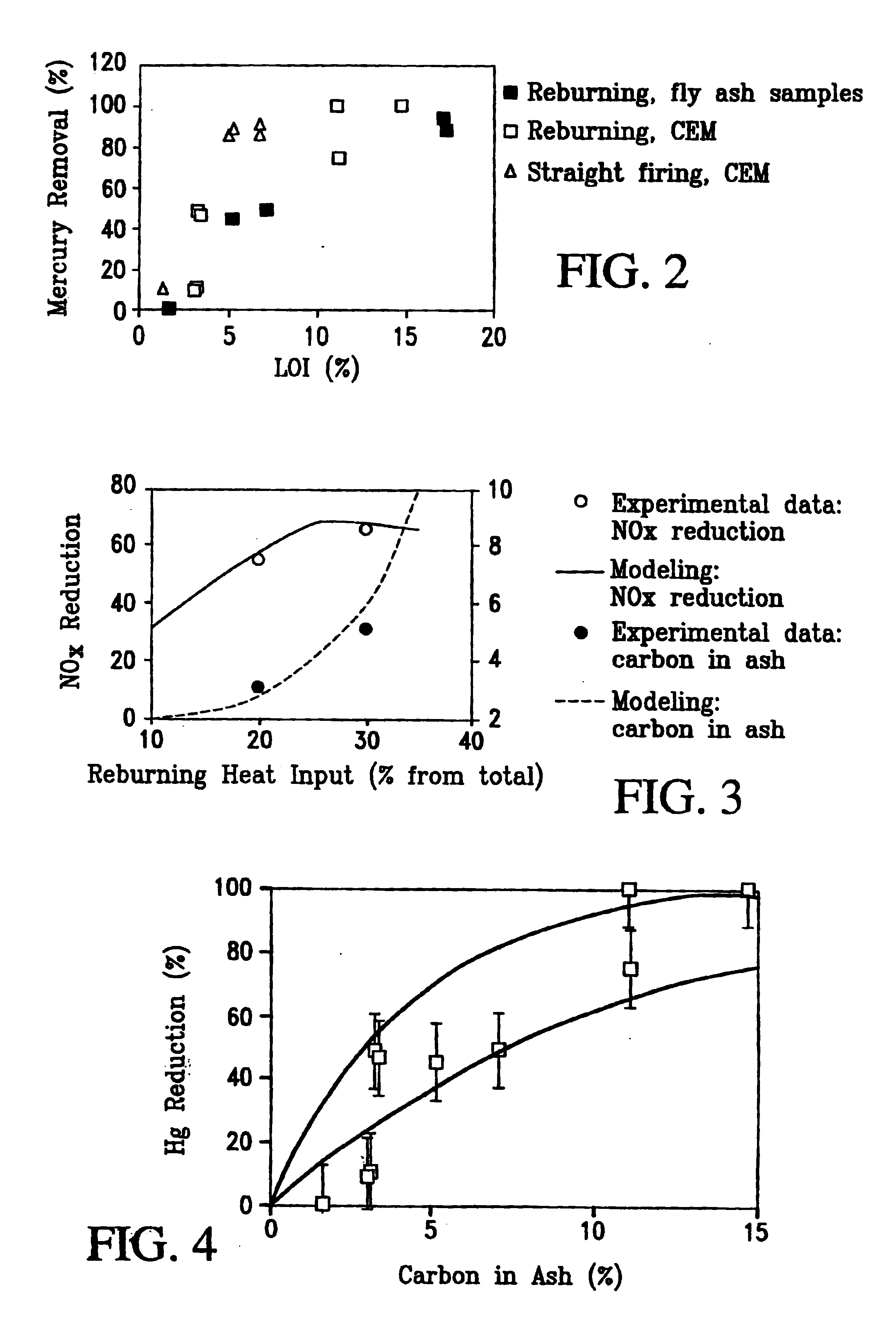Process to reduce mercury emission
a technology of mercury emission and process, applied in the field of process and, can solve the problems of nitrogen oxides being the subject of growing concern, air pollution produced by combustion systems, etc., and achieve the effects of reducing nitrogen oxide and mercury emissions, reducing carbon in fly ash, and enhancing unburned carbon
- Summary
- Abstract
- Description
- Claims
- Application Information
AI Technical Summary
Benefits of technology
Problems solved by technology
Method used
Image
Examples
example 1
Tests were performed in a Boiler Simulator Furnace (BSF). The BSF was a down-fired combustion research facility that had a nominal firing capacity of 1×106 Btu / hr. The BSF was designed to simulate chemical and thermal characteristics of a utility boiler. The BSF was equipped to fire natural gas, oil or coal. The BSF had two main sections: a vertical down-fired radiant furnace and a horizontal convective pass. The furnace was constructed of eight modular refractory lined sections with access ports. It was cylindrical in shape and had an inside diameter of 22 in. The convective pass contained air-cooled tube bundles to simulate boiler heat transfer banks. The BSF was equipped with both a baghouse and an electrostatic precipitator for particulate control at the end of the convective pass.
The BSF is well-suited to process development studies leading to utility boiler applications because it accurately simulates boiler thermal environments. Flame characteristics, gas-phase sampling, gas ...
example 2
A process model was developed and used to predict NOx and mercury control in coal reburning. The process model included a detailed kinetic mechanism of coal reburning combined with gas dynamic parameters characterizing mixing of reagents and global reactions of carbon burnout and mercury absorption. In the modeling, a set of homogeneous and heterogeneous reactions representing the interaction of reactive species was assembled. Each reaction was assigned a certain rate constant and heat release or heat loss parameter. Numerical solution of differential equations for time-dependent concentrations of the reagents permitted prediction of concentration-time curves for all reacting species under selected process conditions. Modeling revealed the process conditions required for improvements in NOx and mercury removal.
The chemical kinetic code ODF, for “One Dimensional Flame” was employed to model BSF experimental data. ODF is designed to march through a series of well-stirred or plug flow ...
PUM
| Property | Measurement | Unit |
|---|---|---|
| Temperature | aaaaa | aaaaa |
| Temperature | aaaaa | aaaaa |
| Temperature | aaaaa | aaaaa |
Abstract
Description
Claims
Application Information
 Login to View More
Login to View More - R&D
- Intellectual Property
- Life Sciences
- Materials
- Tech Scout
- Unparalleled Data Quality
- Higher Quality Content
- 60% Fewer Hallucinations
Browse by: Latest US Patents, China's latest patents, Technical Efficacy Thesaurus, Application Domain, Technology Topic, Popular Technical Reports.
© 2025 PatSnap. All rights reserved.Legal|Privacy policy|Modern Slavery Act Transparency Statement|Sitemap|About US| Contact US: help@patsnap.com



